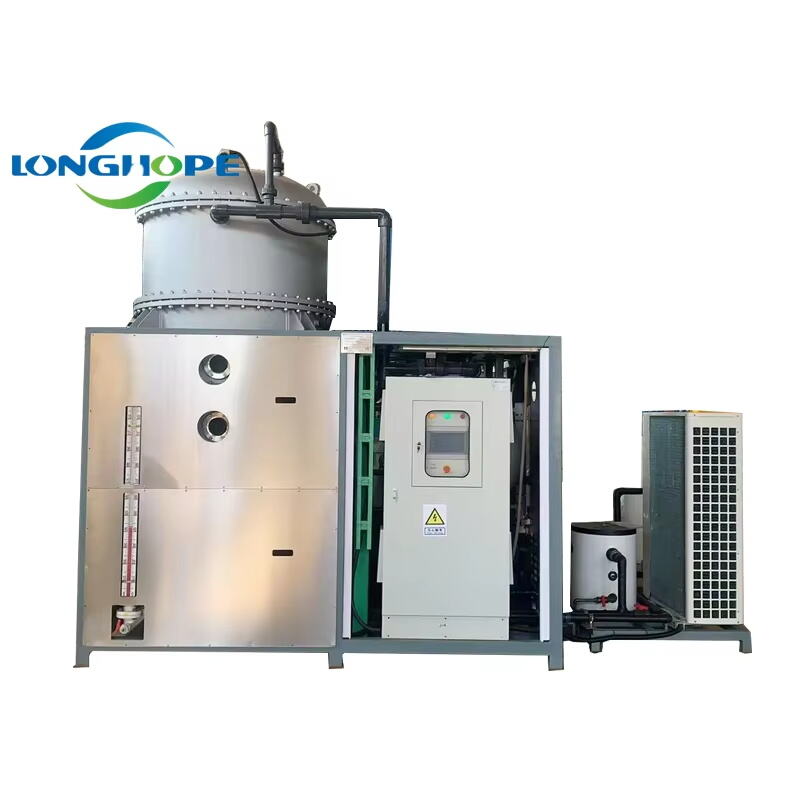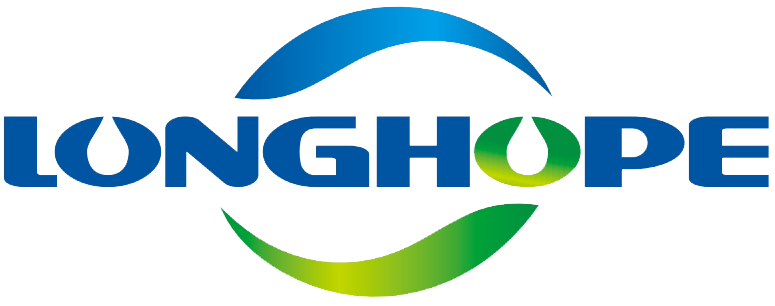Առաջադրանքային հավացողների և կրիստալացողների կրիտիկական դերը գործարանային ջրի կհաշիվում
Ինչպես առաջադրանքային հավացողները առավելագույնում են ջրի վերականգնումը
Արդյունաբերական կեղտաջրերի մաքրման գործում առաջադեմ գոլորշիացուցիչները իսկապես տարբերակիչ են դառնում, երբ խոսքը թափոններից ամենաշատ ջուրը վերականգնելու մասին է: Այս համակարգերը աշխատում են՝ տաքացնելով կեղտաջուրը մինչև ջուրը գոլորշի դառնա, ինչը նշանակում է, որ ընկերությունները կարող են վերականգնել և վերաօգտագործել իրենց ջրամատակարարման մոտավորապես 90%-ը: Արտադրողների համար սա կրճատում է թարմ ջրի ծախսերը՝ համապատասխանելով էկոլոգիական համապատասխանության չափանիշներին: Շատ կառուցապատման համալիրներ սկսել են ընդունել բազմաստիճան արագ գոլորշիացման մեթոդներ միասին ջերմային սեղմման տեխնոլոգիայով: Չնայած այս մոտեցումները պահանջում են ուշադիր ճյուղային ճարտարագիտություն, նրանք կարողանում են կտրուկ կրճատել հեղուկ թափոնների քանակը, երբեմն ծավալները կրճատելով կեսից ավելին՝ կախված գործընթացի պարամետրերից:
Ընդերքային կայանները և նավթաքիմիական հարմարավետությունները իրական առավելություններ են տեսնում, երբ ընդունում են ժամանակակից տեխնոլոգիական լուծումներ։ Վերցրեք, օրինակ, առաջադեմ գոլորշիացման համակարգերը։ Այդ համակարգերը կրճատել են թափոնների հեռացման ծախսերը՝ ընդ որում օգնելով ընկերություններին գործել ավելի լավ միջավայրի համար նպաստավոր եղանակով։ Մենք դա տեսել ենք բազում գործողություններում, որտեղ ձեռնարկությունները իրականում կարողացել են ճշգրտել իրենց արտադրության մեթոդները։ Մասնավորապես մի կայան տարեկան հազարավոր դրամական միավորներ է խնայել իրենց գործընթացների ընթացքում ջուրը վերականգնելու մեջ ավելի խելացի մոտեցում կիրառելու շնորհիվ։ Թվերը ինքներ իրենց մասին են խոսում բազում արդյունաբերական զեկույցներում, ցույց տալով, թե ինչպես են այդ բարելավումները ոչ միայն տեսական, այլ նաև գործնական հաղթանակներ արտադրողների համար, ովքեր ցանկանում են մնալ մրցունակ։
Կրիստալացողականներ՝ արտադրություններից փոխարինելի համարելի նյութերի ստեղծում
Բյուրեղացուցիչները մեծ դեր են խաղում այն լուծված աղտոտողների վերածման գործում, որոնք աղտոտված ջրերում են, հնարավոր է վտանգավոր նյութերի կամ այլ արդյունաբերական կիրառությունների համար վերաօգտագործման նպատակով: Սա նշանակում է, որ ընկերությունների համար ավելի հեշտ է դառնում վերացնել կամ վերաօգտագործել աղտոտող նյութերը, ինչը նպաստում է նրանց հնարավորությանը հետևելու այդ խիստ էկոլոգիական կանոններին, որոնց հետ այսօր ստիպված են գործ ունենալ: Այս նոր բյուրեղացուցիչների նոր մոդելները հագեցած են բավականի արդյունավետ տեխնոլոգիական նվաճումներով, որոնք ամփոփիչ ապրանքի որակը բարելավում են: Արդյունքում, շատ ընկերություններ այլևս միայն իրենց էկոլոգիական պարտավորություններին չեն բավարարվում, այլ որոշները նույնիսկ գերազանցում են գործող կանոնակարգերով սահմանված պահանջները այդ բարելավումների շնորհիվ:
Թվերը պարզ պատմություն են рассказывает рассказывает այն մասին, թե ինչ կարող են անել բյուրեղացնողները ռեսուրսների վերականգնման հարցում, ցույց տալով, որ որոշ կառույցներ վտանգավոր թափոնները կրճատել են մինչև 80 տոկոսով: Այդպիսի կրճատումը իսկապես ընդգծում է, թե ինչու են այդ համակարգերը այդքան կարևոր կանաչ նախաձեռնությունների համար՝ միևնույն ժամանակ օգնելով ընկերություններին իրենց նյութերից ավելի շատ արժեք ստանալ: Երբ ընկերությունները ամենուր փորձում են փոքրացնել իրենց ածխածնային հետքերը, բյուրեղացման տեխնոլոգիան անընդհատ ավելի մեծ ուշադրություն է գրավում որպես այն հիմնարար գործիքներից մեկը, որոնք իմաստ ունեն ինչպես շրջակա միջավայրի, այնպես էլ ֆինանսական տեսանկյունից արդյունաբերական թափոնների խնդիրների դեմ պայքարում:
Հիմնական խնդիրներ ժամանակակից գործնականական ջրերի մաքրումում
Սալուինգ և կանգնաման հակառակ օսմոսի համակարգերում
Ընդհանուր արդյունաբերական կեղտաջրերի մաքրման մեջ մեծ խնդիր է դառնում հակառակ օսմոսի համակարգերում առաջացող կոշտացումն ու խցանումը: Այդ խնդիրների առկայության դեպքում համակարգերի աշխատանքի վրա վատ ազդեցություն է ունենում, ինչը նշանակում է ավելի շատ ծախսեր սպասարկման վրա և երբեմն նույնիսկ ամբողջական համակարգի անջատում: Ըստ տարբեր հետազոտական աշխատանքների, հակառակ օսմոսի մոտ կեսը անվանական անվավերականությունները առաջանում են կոշտացման խնդրից միայն: Սա հստակ ցույց է տալիս, թե ինչու է այնքան կարևոր լավ նախնական մաքրումը: Կոշտացման պատճառները հասկանալը օգնում է ինժեներներին ստեղծել ավելի լավ մաքրման կայաններ, որոնք ամբողջովին խուսափում են այդ խնդիրներից: Նախնական քիմիական մաքրումը նաև ոչ միայն ցանկալի է, այլ նշանակալիորեն երկարացնում է թաղանթի կյանքի տևողությունը, ամբողջ գործընթացը ավելի հարթ է դարձնելով, իսկ աշխատանքային ծախսերը նվազեցնում է ժամանակի ընթացքում:
Բարձր էներգիայի սպասարկում և գործարարության ճնշում
Բարձր ճնշման տակ արդյունաբերական կեղտաջրերի մաքրման համակարգերի շահագործման հետևանքով էներգիայի բարձր պահանջարկը հիմնախնդիր է մնում բոլոր օպերատորների համար, ազդելով ամսական հաշիվներից մինչև համակարգի ընդհանուր արդյունավետությունը: Շատ գործարաններ դեռևս հին սարքավորումներին են հենվում, որոնք էլեկտրաէներգիան խնայողաբար չեն օգտագործում, այլ այն մեծ քանակներով են օգտագործում: Լուրջ լուրն այն է, որ նոր լուծումներ, ինչպիսին ցածր ճնշման տակ մեմբրանային տեխնոլոգիան է, սկսում են տարածվել շուկայում: Այդ համակարգերը պահպանում են մաքրման չափանիշները՝ միաժամանակ էական կերպով նվազեցնելով էներգասպառումը: Վերջին հետազոտությունների տվյալներով՝ ընկերությունները, որոնք կենտրոնանում են էներգաարդյունավետության վրա, կարող են տեսնել իրենց աշխատանքային ծախսերի նվազում մոտ 30 տոկոսով: Այդ իսկ պատճառով էլ առաջատար կառավարման մասնագետները հիմա էներգաարդյունավետությունը դարձնում են համակարգերի մոդեռնացման գլխավոր նախապայման: Ապագայի հեռանկարում՝ այն ըմբռնում են բիզնեսները, որոնք ընդունում են այդ ավելի կանաչ լուծումները, կհայտնաբերեն երկու հիմնարար առավելություններ՝ նվազած ծախսեր և բարելավված շրջակա միջավայրի վիճակ, ինչը ավելի շատ է կարևորանում այսօրվա կարգավորման իրավիճակում:

Զերո Հեղուկ Դիսչարջ (ZLD) Սիստեմների Աճ
Համարեցող դիրքեր համարվող PFAS կանխատեսության բացառման համար
PFAS-ի աղտոտման շուրջ խստացող կանոնները ստիպում են արդյունաբերություններին անցնել զրոյական հեղուկ արտանետման (ZLD) համակարգերի: Այս քիմիական նյութերը մնում են հավերժ, քանի որ դժվար է քայքայվում, ինչը դժվարացնում է համա conventionalսական կեղտաջրերի մաքրման գործընթացը: Երբ կառավարությունները ներդնում են նոր քաղաքականություններ և համայնքները ավելի ուժեղ են խոսում մաքուր ջրի մասին, ձեռնարկությունները ստիպված են լինում արագ տեղադրել ZLD լուծումներ՝ մեր ընդհանուր ջրային աղբյուրները և մարդկանց առողջությունը պաշտպանելու համար: Նայեք, թե ինչ է տեղի ունենում Ամերիկայում հիմա՝ ավելի քան քառասուն նահանգներ արդեն ավելի խիստ PFAS կանոններ են ներդրել: Այդ պահանջների դեմ կանգնած ընկերությունները դիմում են արտահոսքի տեխնոլոգիաների, ինչպես օրինակ՝ ZLD համակարգերը, որոնք իրոք հեռացնում են այդ անցուդ քիմիական նյութերը գործարանների արտահոսքից մինչև միջավայր վերադառնալը: Ինչի արդյունքում վնասակար թափոնները ավելի քիչ են ավարտվում այն տեղերում, որտեղ չպետք է լինեն:
Եվապորատորների և կրիստալացուցիչների սիներգիա ZLD-ում
Երբ գոլորշիացուցիչները աշխատում են ԶԼԴ համակարգերում բյուրեղացուցիչների հետ, ընկերությունները իրենց մաքուր շահույթի համար իրական առումներ են ստանում՝ կրճատելով թափոնները: Իրականում գործընթացը բավականին պարզ է. համակարգը վերցնում է մշակման ավարտից հետո մնացած ամեն ինչ և կրկին վերածում է օգտակար բանի, որն ի վերջո նշանակում է ավելի քիչ թափոններ տեղափոխել աղբավայրեր: Գործընթացը սկսվում է ամբողջ ջուրը հեռացնելով, իսկ հետո մնացածը վերածվում է պինդ նյութի, որը հնարավոր է վերաօգտագործել այլ տեղերում: Արդյունաբերական ձեռնարկությունները, որոնք այս տեսակի կարգավորումներ են ներդրել, հաճախ տեսնում են մոտ 90%-ով քիչ ջրի օգտագործում և կտրուկ նվազած թափոնների քանակ՝ համեմատած ավանդական մեթոդների հետ: Նայելով այն արդյունքներին, որոնք տարբեր արտադրական ոլորտներում գտնվող գործարանները ցուցաբերում են, հստակ է դառնում, թե ինչու է ավելի շատ ընկերություններ դիմում են ԶԼԴ տեխնոլոգիաների՝ փորձելով համապատասխանել ավելի խիստ էկոլոգիական նորմերին՝ իրենց բյուջեները չթուլացնելով:
Օպտիմիզացված արդյունաբերական հեղուկ աղամուտի մշակման համակարգերի առավելությունները
Գումարելի արդյունքների վերականգման և վերակիրառում
Երբ կեղտաջրերի մաքրման համակարգերը օպտիմալ են, իրականում դրանք մեծապես կրճատում են ծախսերը, քանի որ ընկերությունները կարողանում են վերականգնել շատ արժեքավոր նյութեր իրենց թափոններից: Այդպիսի համակարգեր օգտագործող կառույցներ հաճախ իրենց հումքը վերականգնում են՝ փոխարենը միշտ նոր գնելու, ինչը նշանակում է ավելի քիչ ծախս արտաքին մատակարանների վրա և ավելի ցածր վճարներ թափոնների հեռացման համար: Որոշ հետազոտություններ ցույց են տվել, որ գործարանները, որոնք կիրառում են ռեսուրսների վերականգնման մեթոդներ, կարող են տեսնել իրենց շահագործման ծախսերի մոտ կեսը անհետանալ: Այդպիսի տնտեսական միջոցները շատ ընկերությունների համար ներդրումներն արժեքավոր են դարձնում՝ շրջակա միջավայրի պահպանության և միևնույն ժամանակ շահույթի ապահովման տեսանկյունից: Կազմակերպությունները, որոնք հետաքրքրված են կայուն տարբերակներով, պետք է ուսումնասիրենք, թե ինչ է առաջարկում Wuxi Longhope Environmental-ը ռեսուրսների վերականգնման սարքավորումների հարցում: Նրանց ցածր ջերմաստիճանային ջերմափոխանակիչ գոլորշիացուցիչները և բյուրեղացնող մեքենաները արդյունավետ գործիքներ են ապահովելու համար, որ ոչ մի արժեքավոր նյութ չկորցվի:
Միջոցների նվազագույն արժեքների վերականգման միջոցների միջոցով փոքրացնելով միջավայրային ազդեցությունը
Արտադրական ոլորտում կեղտաջրերի մաքրման գործում նորագույն տեխնոլոգիաների ներդրումը միջավայրի վրա ազդեցությունը զգալիորեն նվազեցնում է: Նոր համակարգերը աղտակիչների հեռացման գործում ավելի լավ վերահսկողություն են ապահովում, ինչի արդյունքում արտահոսքի ջուրը ավելի մաքուր է լինում, քան առաջ: Որոշ հետազոտություններ ցույց են տվել, որ որոշ դեպքերում բարելավումները կազմել են մոտ 95%: Մաքուր արտահոսքը նշանակում է, որ գործարանները կարողանում են առանց դժվարաթյունների հետևել խիստ էկոլոգիական կանոններին, ինչպես նաև հասարակության կողմից ավելի պատասխանատու ձեռնարկություններ են դասվում: Կեղտաջրերի մաքրման գործում տնտեսապես նպատակահարմար մոտեցումն աշխարհի համար էլ օգտակար է: Այդ մեթոդներին ներդրում կատարող ընկերությունները սովորաբար ավելի ուժեղ համբավ են ձեռք բերում որպես սոցիալապես պատասխանատու կազմակերպություններ: Վերցրեք, օրինակ, Wuxi Longhope Environmental-ը: Վերջերս նրանք մշակել են մի շարք արդյունավետ լուծումներ կեղտաջրերի մաքրման հարցում: Եթե մարդը ցանկանում է իր կառուցապատման մաքրման համակարգերը թարմացնել և միևնույն ժամանակ նվազեցնել էկոլոգիական հետքը, ապա արժե ուսումնասիրել նրանց բյուրեղացնող և գոլորշիացնող համակարգերը:
Համարյակ ուղեցուցիչները գործակայությունների ջրասպաշիրության մեջ
Երկարաժամանական ավտոմատացում արագացումներում և կրիստալացումներում
Ավտոմատացումը փոխում է արդյունաբերությունների կողմից աղբյուրների կառավարման եղանակը, հատկապես ավելի արդյունավետ գոլորշիացուցիչների և բյուրեղացնողների կառավարման հարցում: Ինտելեկտուալ համակարգերի շնորհիվ օպերատորները կարող են հսկել և կարգավորել աղբյուրների մաքրման գործընթացները իրական ժամանակում, ինչը ամբողջ գործընթացը ավելի հարթ է դարձնում, քան առաջ: Առավելությունները չեն սահմանափակվում նաև այդքանով: Կանխատեսող պահպանման հնարավորությունները օգնում են խնդիրները հայտնաբերել դրանք խոշոր խնդիրների վերածվելուց առաջ, իսկ ավտոմատացված աշխատանքային գործընթացները ապահովում են գործընթացների շարունակականությունը անակնկալ իրադարձությունների դեպքում: Այս բարելավումները նվազեցնում են սարքավորումների անդադար կանգառը և ժամանակի ընթացքում փոխհատուցում են աշխատանքային ծախսերը: Այս համակարգերին միանում է նաև իրադարձությունների ինտերնետի տեխնոլոգիան, որը տարբեր բաղադրիչները միասին կապում է, ապահովելով ավելի լավ համագործակցություն: Այս տեխնոլոգիաների ինտեգրումը ոչ միայն բարձրացնում է գործողությունների արդյունավետությունը, այլ նաև աջակցում է շրջակա միջավայրի նկատմամբ ընկերությունների ձգտումներին, որոնք այսօր շատ կարևոր են:
Հաստատունության նպատակները համոզում են նորությունները ZLD-ում
Շրջակա միջավայրի նկատմամբ ունեցած ահազարտությունն իսկապես խթանում է զրոյական հեղուկ արտանետման (ZLD) համակարգերի ներդրումը տարբեր ոլորտներում: Շատ արտադրական ձեռնարկություններ սկսել են բյուջեներ հատկացնել ZLD համակարգերի իրականացման համար, քանի որ կառավարությունները խստացնում են ջրային աղտոտման օրենքները: Վերջերս այդ կեղտաջրերի մաքրման մեթոդներում առաջադիմությունը կենտրոնացած է էներգիայի օգտագործման կրճատման վրա՝ ապապնդելով արժեքավոր նյութեր աղտոտված հոսքերից, ինչը համապատասխանում է միջազգային կլիմայական թիրախներին: Շուկայի վերլուծաբանները նշում են այս ոլորտում ներդրումների մեծ աճ, սպասելով մոտ 25% աճ հինգ տարվա ընթացքում՝ կախված տարածաշրջանային գործոններից: Այն, ինչ մենք այսօր տեսնում ենք, այլևս չի կապված միայն կանաչ մարքեթինգի հետ, այլ իրական փոփոխություններ արտադրամասերում, երբ ընկերությունները ZLD տեխնոլոգիան ինտեգրում են ոչ միայն կանոնադրություններին համապատասխանեցնելու, այլ նաև այն պատճառով, որ երկարաժամկետ առումով դա տնտեսապես հիմնավորված է՝ հաշվի առնելով ինչպես շահագործման ծախսերը, այնպես էլ բրենդի համբավը:
Հաճախ տրամադրվող հարցեր
Ինչպես են առաջացված հանդերձումները օգտագործում են տանձային ջրի մշակման համար։
Առաջացված հանդերձումները առավելագույնը արժանցում են ջրի վերականգմանը, նվազեցնում են հեղուկ անտառները, նվազեցնում են անտառների հանձնումից առաջացող արժեքները և համաձայնեցված են սկիզբնավորության նպատակներին։
Ինչպես են կրիստալացումները նպաստում են տանձային ջրի վերականգմանը։
Կրիստալիզատորները փոխակերպում են լուծված հանգույցները դրանց հաստատուն կողմակի արտադրանքների, թույլատրելով հեշտացնել առարկայի հանձնումը և աջակցելով միանալիքային կանոնակարգների հետ համաձայնությունը:
Ի՞նչ խնդիրներ կանգնում են արդյոք արդյոք գործարանային ջրի մաքրումի գործընթացում:
Հիմնական խնդիրները ներառում են սալուին և կոնտամինացիան հակառակ օզմոսային համակարգերում և բարձր էներգիայի սպասարկումը՝ գործարանային ջրի մաքրումի գործառույթների հետ կապված:
Երբեմն են ստանում համեմատական համեմատական համեմատական (ZLD) համակարգերը:
ZLD համակարգերը ընդունվում են կանոնակարգական ճնշումների պատճառով՝ PFAS կոնտամինացիայի վերաբերյալ և դրանց արդյունավետության պատճառով՝ ջրի և առարկայի մեծացումում, աջակցելով միանալիքային համարժեքությունը:
Բովանդակության աղյուսակ
- Առաջադրանքային հավացողների և կրիստալացողների կրիտիկական դերը գործարանային ջրի կհաշիվում
- Հիմնական խնդիրներ ժամանակակից գործնականական ջրերի մաքրումում
- Զերո Հեղուկ Դիսչարջ (ZLD) Սիստեմների Աճ
- Օպտիմիզացված արդյունաբերական հեղուկ աղամուտի մշակման համակարգերի առավելությունները
- Համարյակ ուղեցուցիչները գործակայությունների ջրասպաշիրության մեջ
- Հաճախ տրամադրվող հարցեր

